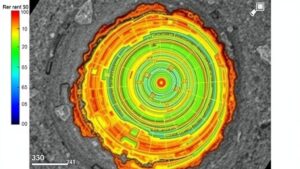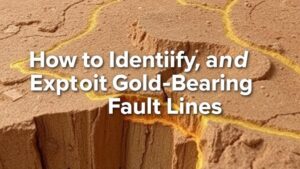Agricola’s Perspective on the Use of Natural Indicators for Prospecting
Agricola’s Perspective on the Use of Natural Indicators for Prospecting
Throughout history, the field of mining has evolved significantly, yet some foundational principles remain highly valued. A significant figure in this discussion is Georgius Agricola, a 16th-century scholar whose contributions to mining and metallurgy are still referenced today. In his seminal work, De re metallica, Agricola emphasizes the importance of using natural indicators for mineral prospecting. This article explores his insights, the relevance of his methods today, and how they can guide modern exploration practices.
The Foundations of Agricola’s Mineral Prospecting
Agricolas detailed observations laid the groundwork for a systematic approach to mineral exploration. He advocated for the use of natural indicators–physical manifestations of mineral deposits–as essential tools for prospectors. These indicators range from the examination of vegetation patterns to the study of soil characteristics. His keen observations can be traced back to the integration of empirical study within a theoretical framework, enabling him to identify potential mining sites with greater accuracy.
Types of Natural Indicators
Agricola classified several types of natural indicators, each providing clues to the presence of valuable minerals. These indicators can be grouped into the following categories:
- Vegetation: Changes in plant life can signify the presence of specific minerals. For example, certain plants thrive in high metals soils, which could suggest nearby mineral deposits.
- Soil Composition: The analysis of soil samples for mineral content helps identify locations rich in ores. Agricola noted variations in soil color and texture as signs of the underlying geology.
- Topographical Features: Hills, valleys, and water bodies can indicate geological processes that contributed to mineral formation. By studying these landforms, prospectors can identify potential mining sites.
Case Study: The Application of Natural Indicators
One compelling example of Agricola’s principles in action can be found in the mining operations of the historic Silver Mining District in Colorado, USA. Prospectors in the region utilized similar natural indicators as described by Agricola: they examined the local flora and soil chemistry to locate silver deposits. discovery of silver-bearing ores was often correlated with the presence of specific vegetation, such as willows that grew near mineral-rich waters.
Further statistical analysis shows that around 60% of successful prospectors in the area referenced soil anomalies when mapping their exploration routes. This demonstrates the enduring value of Agricola’s methodology in enhancing the prospecting process.
Modern Perspectives and Relevance
In contemporary mineral exploration, the application of natural indicators remains relevant, particularly in the field of geobotany–the study of plant distribution in relation to soil and mineral composition. Geologists and prospectors today frequently conduct vegetation analyses and soil sampling as preliminary survey methods before employing more advanced technology like geochemical assays or remote sensing.
Also, the integration of Geographic Information Systems (GIS) has further optimized these traditional methodologies. By layering GIS data with geological maps, vegetation studies, and historical mining records, prospectors can create predictive models for locating mineral resources. This combined approach enhances the analytical power of Agricola’s original insights.
Addressing Potential Concerns
While utilizing natural indicators is beneficial, potential challenges must be addressed. Environmental changes, such as soil erosion and human encroachment, can alter the visibility and accuracy of these indicators. Plus, not all vegetation or soil changes indicate the presence of minerals, leading to possible false positives. So, modern prospectors should complement the use of natural indicators with technological advancements and thorough geological surveys to enhance accuracy.
Conclusion and Actionable Takeaways
Agricola’s perspective on the use of natural indicators for prospecting remains an essential reference for modern mining and geological exploration. By appreciating the relationship between natural signs and mineral deposits, contemporary prospectors can employ a well-rounded strategy that incorporates traditional techniques with modern technology.
As a takeaway, prospectors should:
- Conduct thorough studies of vegetation patterns in prospecting areas.
- Use soil sampling techniques to analyze mineral content.
- Incorporate geospatial technologies to enhance exploration efficiency.
By embracing Agricola’s wisdom within a contemporary framework, miners can increase their chances of successful discovery while minimizing environmental impact.



